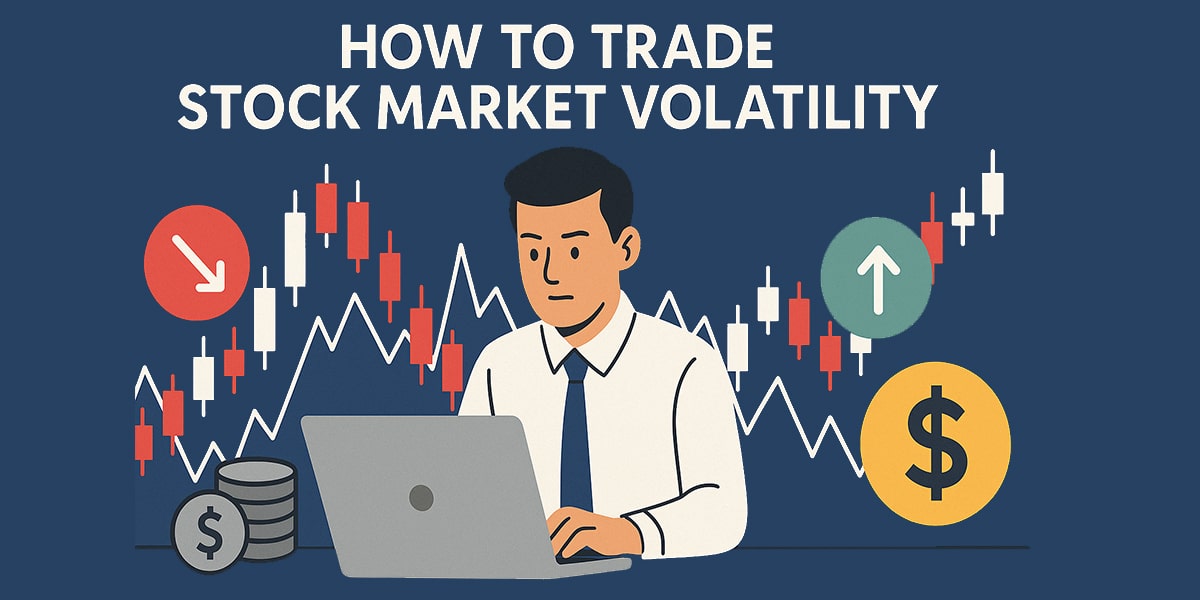22 March 2024
Relationship between interest rates and stock prices
Stock market volatility is an essential concept for traders. Knowing the stocks with the greatest potential for significant price movement, as well as the best ways to trade them, can open up exciting opportunities. In this piece, we'll take a closer look at high volatility stocks, learn how to identify the most volatile stocks, and provide the best practical tips for trading them.

What is stock volatility?
Stock market volatility is the range of change in a stock's price over time. More volatile trading can produce significant profits as well as significant losses. Stock volatility can be understood using the following measures:
1) Standard Deviation
Standard deviation is the average deviation of a stock's price from its average over a certain period. Charts can use Bollinger Bands to analyze the standard deviation.
2) Beta
The beta factor of a stock is a measure of its volatility relative to the broader market. The beta factor of the market is 1.0, with more volatile stocks having a higher beta (e.g., 2.0) and less risky stocks closer to zero.
Which stocks are the most volatile?
When it comes to volatility and stocks, there is no one set of stocks that is always more volatile than another. Stocks can be categorized as "currently volatile," describing stocks with current high volatility, or "expected volatile," meaning stocks that may be stable at the moment but have the potential for high volatility in the future.
As you can see from the example above, a stock can have periods of high volatility, such as showing a beta near zero, then increasing beta to 2.0, and then falling back to near zero a few months later.
- ◆ Identifying high volatility stocks
Traders can use a stock screener, derivatives market search and third-party websites to identify high volatility stocks.
- ◆ Stock screener/filter
A stock screener or stock filter is an automated program that produces a list of stocks that meet certain criteria.

How to trade stock market volatility
Successfully trading stock market volatility involves effective hedging, knowing when to sell stocks, managing risk wisely, and identifying buying opportunities when a known stock drops in price.
- ◈ Hedging
Hedging against volatility spikes is important to offset losses. This can be done by buying put options, which allow assets to be sold at an agreed-upon price on or before a certain date, and trading inverse exchange-traded funds, which act as an inverse of the index or benchmark they track. Traders can also examine an aggregate of stocks through an index to protect against volatility (see below).
- ◈ Selling stocks/risk management
If extreme volatility is affecting your thinking, it may make sense to sell some stocks and invest in less dynamic securities. This will allow you to trade further without risking more than you are willing to lose.
Practicing sound risk management is critical when dealing with aggressive price movements. Volatile stocks can lose you a lot of money, so you should not trade them if you are not set up correctly that day, especially when it comes to day trading.
- ◈ Identifying buying opportunities
Sometimes a buying opportunity arises when high volatility affects the price of high-quality stocks. For example, in early 2019, NASDAQ and S&P 500 member Apple lowered its earnings forecast, causing its price to fall 10-15% in the days that followed. However, just three months later, it fully recovered and is once again close to a $1 trillion valuation. Identifying opportunities to go long when market conditions change is one way traders speculate, combined with sound trade management techniques.

Quick tips for trading stock market volatility
When it comes to trading stock market volatility, the following tips are useful:
Remember that price movements are usually highly correlated with the performance of the major stock indices on which the stock trades. In addition to macroeconomic factors, keep in mind that individual stocks are affected by microeconomic factors such as regulation, liability and management performance.
To avoid unforeseen risks, a trader can study an aggregate stock through one of the major stock indices such as the FTSE 100, DAX and CAC 40.
Index trading removes some of the smaller risks but still allows exposure to the stock asset class. Index trading is prone to liquidity issues during periods of extreme volatility and crises. To combat the potential lack of liquidity in the stock market, foreign exchange markets can offer a much wider range of participants and capitals.


